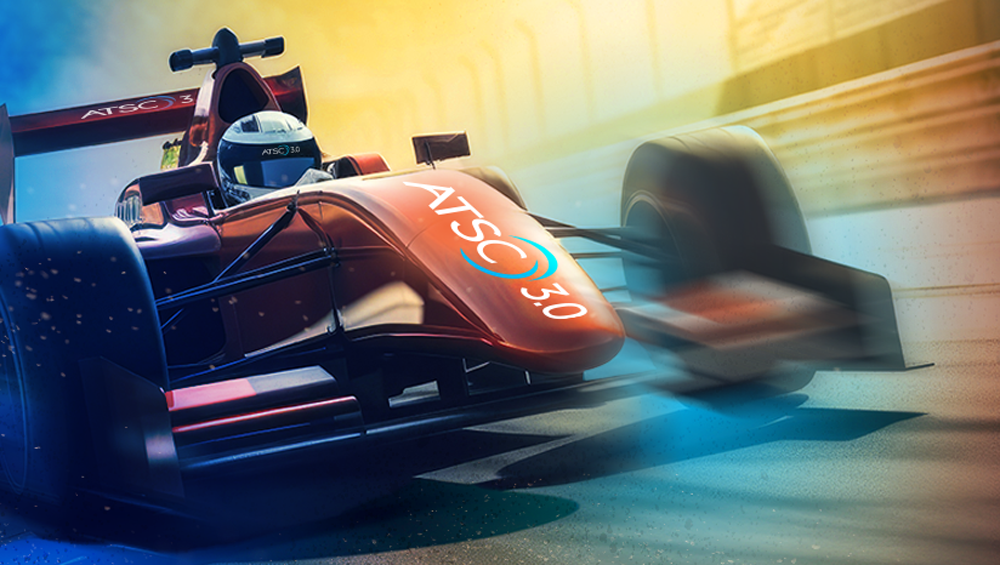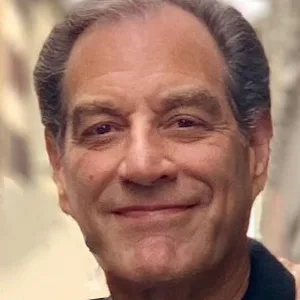
Stepping On The Gas For NextGen TV Broadcast Deployment


Jerald Fritz
It has been 11 years since the Advanced Television Systems Committee called for proposals to upgrade the current digital terrestrial transmission system (ATSC 1.0) to a significantly improved level — ATSC 3.0 — and just over six years since FCC rules regarding deployment of 3.0 became final. Broadcasters stepped up to deploy this innovative new service that now reaches over 75% of the country’s population while consumer electronics manufacturers have now provided well over 10 million TV sets enabled to receive the new tech.
This is tremendous progress. But so much still needs to be done to unleash the full potential of 3.0 for both consumers and broadcasters. The full potential of 3.0 is hobbled by our inability to access capacity now dedicated to the exact same thing that viewers already receive.
Broadcasters need an urgent jolt to unleash this revolutionary new technology.
What does that jolt look like? Four shocks:
- Accelerated NextGen TV deployment – a 1.0 sunset.
- Flooding the market with affordable/ubiquitous dongles.
- Offering better quality programming.
- Demonstrating that money-making datacasting is here now.
As to accelerated NextGen TV deployment, CTA predicts there will be 35 million TV sets sold in 2028 plus 86 million already sold by then. That’s more than 120 million sets in use. That’s a good start. But there is a symbiotic relationship between receivers and transmission. Broadcasters must commit to deploying the 3.0 standard and CE manufacturers need to march in sync to include the tech in their devices.
So, how do we kick start that?
The answer is with a clear signal that there will be an end to ATSC 1.0 broadcasts.
Inertia dictates that nothing will change if there is no consequence. A clear sunset date will do much to encourage integration of 3.0 capability in multiple devices.
Also essential are those affordable/ubiquitous dongles. The FCC’s key concern is that many television sets cannot receive the NextGen broadcast signal. One way to address this is accessory devices that can receive the new signals. An aggressive plan to get more of these devices to the market is essential.
CE manufacturers are doing their part. Multiple devices are appearing. Efficient patent pools have been formed to provide reasonable rates and one-stop shopping for essential intellectual property.
Flooding the market with these affordable converter devices ensures that viewers won’t have to abandon their 1.0 sets to watch over-the-air delivered programming.
The process can certainly be augmented with government or industry incentives and funding aimed at lowering costs, along with retailer partnerships to promote and distribute these devices.
To bring all this together, we need better quality programming. Consumers need a reason to buy new products. Stunning visuals and enhanced audio provide that reason. Transmissions using high dynamic range (HDR) video provide exceptionally vibrant contrast and colors with spectacular brightness and depth. HDR content is already being offered by major streaming platforms, as it provides more realism and depth for a cinematic viewing experience.
Adopting HDR can give broadcast networks a competitive edge in the increasingly crowded media landscape and keep pace with streaming alternatives. The more programming broadcasts this way, the more consumers will flock to watch it.
It should be an absolute priority for all program producers.
Finally, we need to realize datacasting monetization. If broadcasters are to continue to serve the public with free, over-the-air signals including news, sports and other highly desirable programming, we must adapt as viewers migrate away from traditional linear television.
Enter datacasting. Broadcasters’ business models will inevitably include a third revenue stream as robust as advertising and retransmission fees, which is essential to ensuring broadcasters can continue to serve their viewers and the public interest. It is the critical reason that NextGen broadcasting is so much more than simply NextGen TV.
Connecting multiple NextGen broadcast-transmitting stations with potential customers in need of diverse datacasting capacity is an economically rewarding challenge. Never have we had the ability to connect a network of television stations as a distribution platform. Now we do, opening the door to a wireless broadcast backbone for IP data delivery across the country.
So, what are these first datacasting use cases?
Content Distribution Offload | Well over 80% of all consumer internet traffic today is for video with more than 1.1 million minutes of video streamed or downloaded every second. Those are one-to-one events. That’s extraordinarily inefficient compared to the one-to-infinite broadcast architecture that could cover the entire country. Offloading content to the broadcast one-to-many delivery makes the distribution enormously efficient. It is a hybrid model that exploits the unique capabilities of the broadcast/broadband convergence capability built into the ATSC 3.0 standard.
In-Vehicle Video Entertainment And Enhanced Telematics | The NextGen broadcast system is uniquely designed to synergize OTA broadcast and broadband services. Nowhere will this be more immediately beneficial than in automobile servicing. Connected vehicles are rolling computers. Using NextGen broadcast capabilities, data services providers can deliver software updates simultaneously to an infinite number of devices in their smart vehicles to upgrade software. Safety updates can be delivered within hours, not days. Services can be provided to hundreds of thousands of devices instantly and simultaneously with no network slowdowns since broadcast architecture has no cell phone bottlenecks.
Augmented GPS | Broadcasters can be in the center of the fast-growing commercial positioning, navigation and timing market. Using a trivial amount of a station’s NextGen digital capacity, these enhanced GPS services can provide vast improvements to location accuracy for an unlimited number of users, vehicles and devices, all at a small fraction of the cost of existing services.
Interactive Music Channels | Using just a fraction of their capacity, a NextGen broadcaster could offer 150 audio channels. In addition, NextGen broadcast capacity can be used to host virtual music channels. The global music streaming company, ROXi, demonstrated this concept at CES this year with America’s first ever fully interactive free music channels to U.S. TVs including music, karaoke and music games. And these are just the tip of the iceberg. There is much money to be made by refarming the broadcast channel.
Broadcasters face increasing competition for both advertisers and viewers, fostering a decline of traditional linear television. The reaction needs to accelerate now. NextGen broadcasting provides new essential tools for broadcasters to serve their viewers as well as generate new revenue streams. Fast-tracking the effort to bring that to the market is urgent and requires a laser focus from all parties.
Jerald Fritz is EVP strategic affairs, ONE Media.
Editor’s Note: This is an edited version of a longer original version.
























Comments (0)
John Lawson says:
April 4, 2024 at 10:29 am
That’s a great set of ideas for getting the NextGen TV broadcast transition in full gear. Sinclair/ONE Media has been a reader in this space from the beginning.
Kathy Haley says:
April 4, 2024 at 1:03 pm
How much do the dongles cost and would the government subsidize their distribution? If stations promote them, will their MVPD partners object?
sailor46 says:
April 4, 2024 at 1:08 pm
The only way that ATSC 3.0 will ever be fully implemented is for 1.0 to end. This needs to be handled like analog to digital was handled.
TomG says:
April 4, 2024 at 2:24 pm
You fail to mention DRM in your article and the fact that there are not gateway devices currently available that work with DRM. Also in the full article you mention there are $40 dongles on the market today. Where are these devices? I have not seen any dongles at that price level.
John Smith says:
April 4, 2024 at 7:52 pm
Right now, there doesn’t seem to be any effort from the A3SA (copy-protection/DRM) to provide manufacturers of gateway devices a means to decrypt and distribute the signal on a home network.
Apparently broadcasters want us to have an antennae for each tv, or run a coax cable throughout the house. This seems very antiquated, as the world has moved on to a reliable way to distribute content (Netflix, Hulu) via WiFi. And what about those of us with home theaters, where video & audio signal is fed into a receiver and then to a projector? How many receivers are going to be ready for ATSC 3.0?
I live in an area with 4 broadcasts in ATSC 3.0 but can over view 2 due to the DRM restrictions in place for the other two. Highly frustrating that broadcasters turned DRM on with such poor preparation for how the consumer will be able to receive it.
TempoNick says:
April 6, 2024 at 10:06 am
I just don’t understand this fetish for overly restricting access to content. There’s nothing special about some network reality show coming in over the air, one of hundreds of sportsball games broadcast throughout the year or the nightly local news cast. It’s not a controlled substance and it’s not some blockbuster movie that hasn’t been released yet. And it’s not like I can’t find something on the Internet if I want a copy of it. Stop torturing us with DRM and garbage like that. I also don’t like the fact that you have to be plugged into the internet to watch tv and to get around DRM.
You people are making this too complicated and too much of a hassle. I can just turn on the TV and watch analog tv, radio and even 1.0. I don’t have to jump through all kinds of hoops to get there. This isn’t the space shuttle or a 747.
You’re just shooting yourselves in the foot by sunsetting 1.0. I don’t plan on spending any money for a dongle.